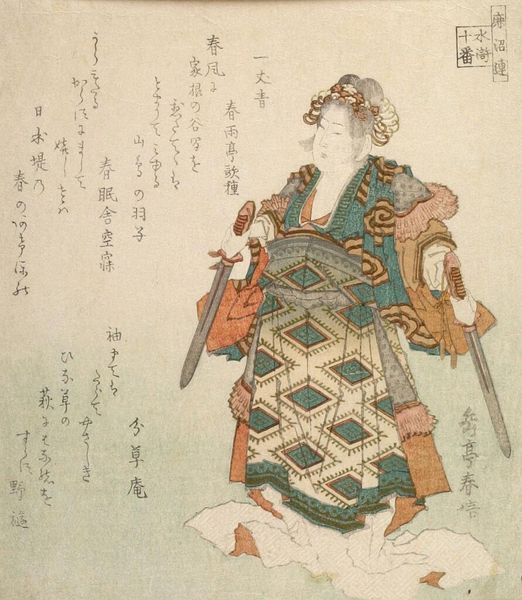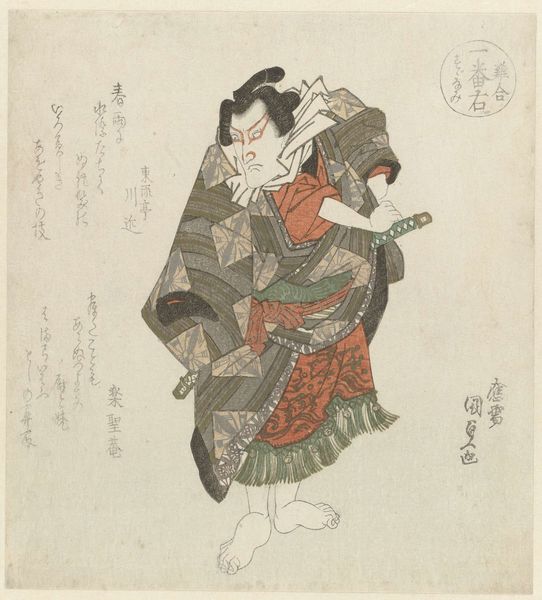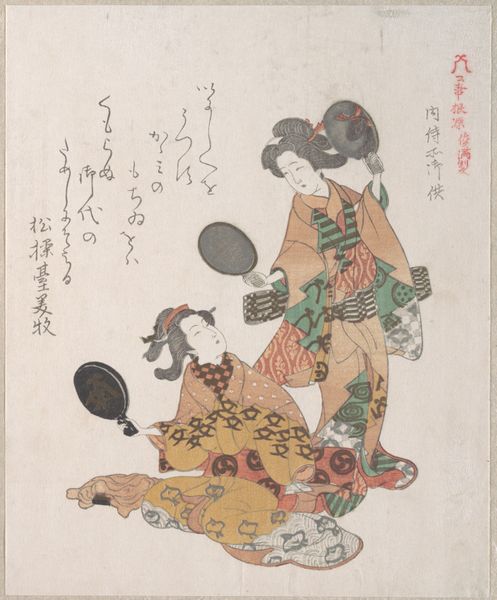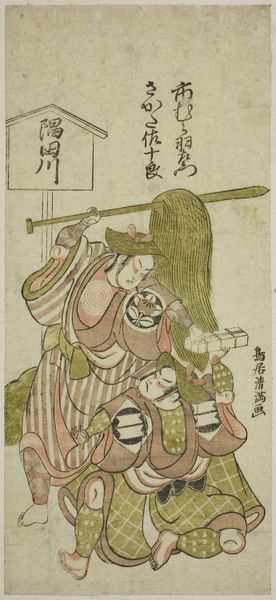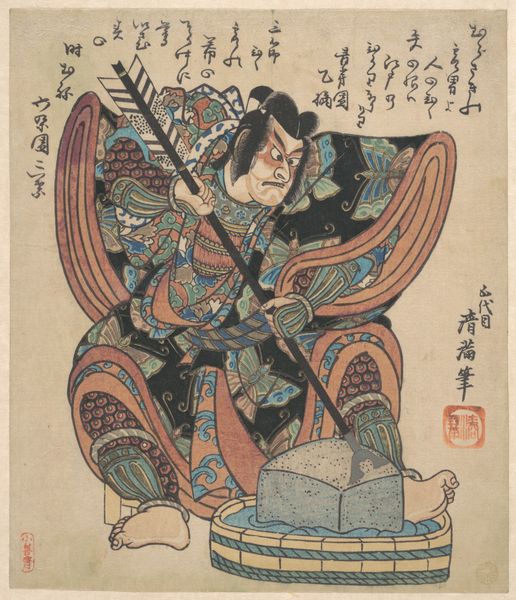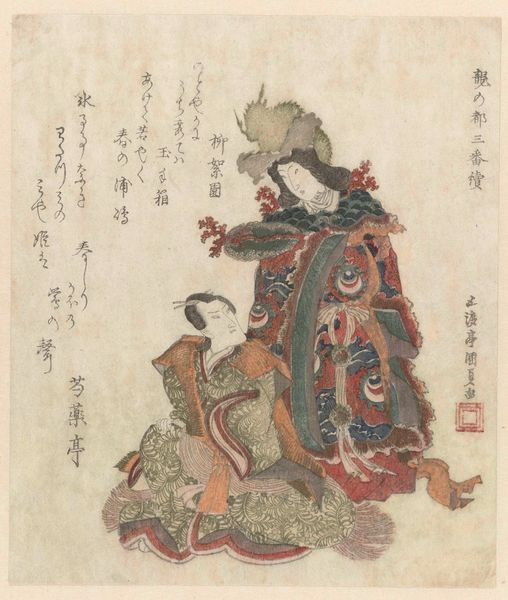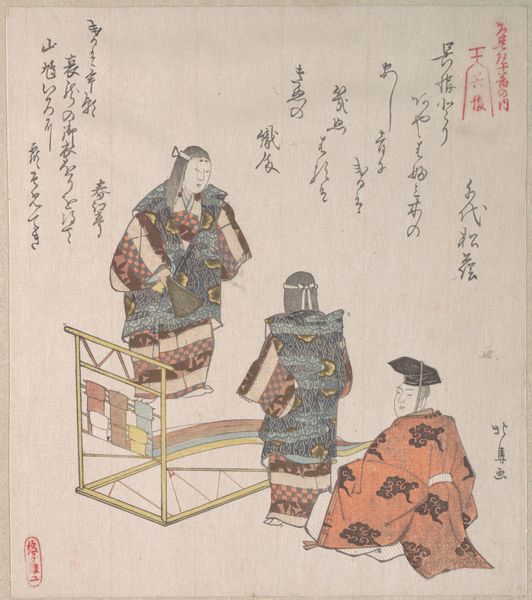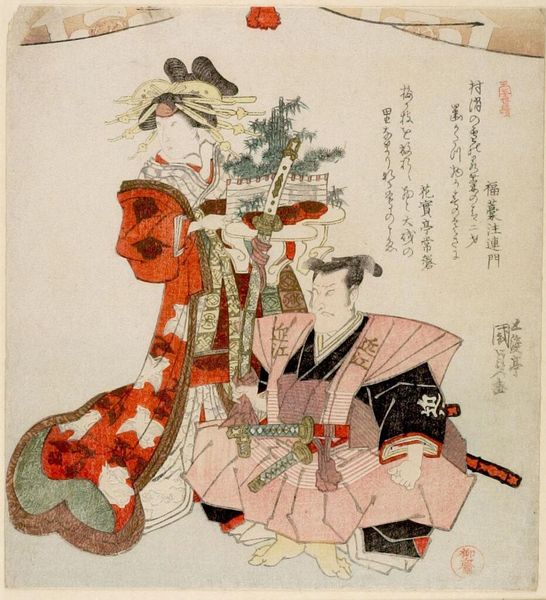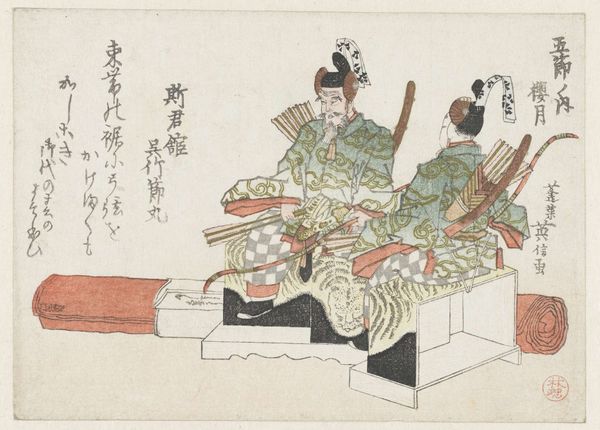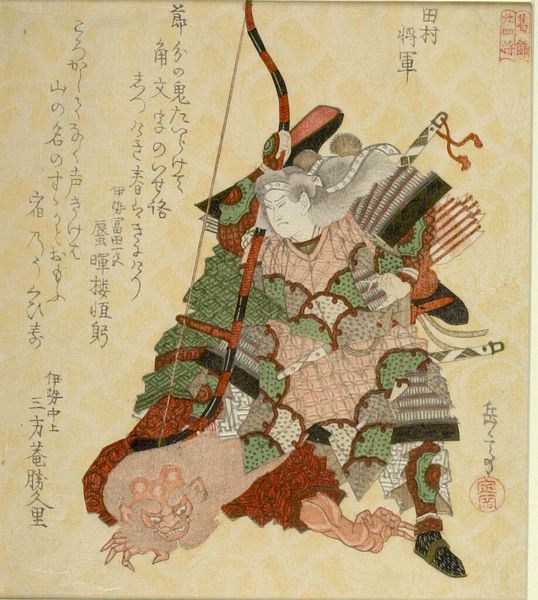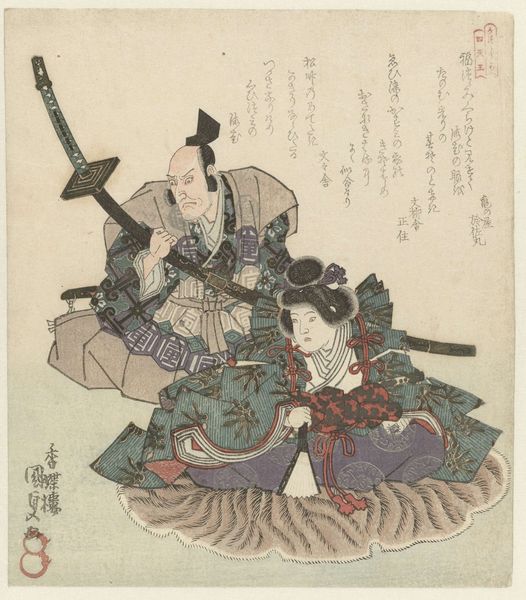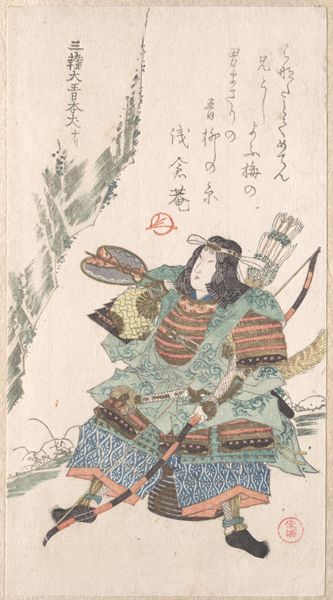
print, woodblock-print
#
narrative-art
# print
#
asian-art
#
ukiyo-e
#
figuration
#
woodblock-print
Dimensions: height 211 mm, width 184 mm
Copyright: Rijks Museum: Open Domain
Curator: Here we have Totoya Hokkei's woodblock print, "De regent Takeuchi no Sukune," created around 1822. It's currently held here at the Rijksmuseum. Editor: The initial impact is… densely patterned. My eye struggles to find a resting place amid the layers of geometric motifs. It feels simultaneously decorative and impenetrable. Curator: Indeed. What you're seeing are layers referencing Sukune, a legendary Japanese regent, particularly within the context of the "ukiyo-e," or "pictures of the floating world," genre. This work references powerful familial narratives during the Edo period and suggests the way in which patriarchal lines are venerated within the culture. Editor: Right, I see that, especially when considering the strategic layering of form and meaning. Each plane acts as an independent signifying element as part of a larger design, that is less about spatial logic and more about visual semiotics. The overlapping kimono patterns and armor point to status and strength and even visually compete for prominence on the flat surface. Curator: Exactly! Hokkei uses visual signifiers to construct the figure not just as a historical regent, but also as an emblem of enduring power and intergenerational wisdom, so in this representation, one might explore Japanese culture through themes such as ancestor veneration and the ways social hierarchies inform one's identity. Editor: It also makes interesting use of limited palette, that makes for interesting reading between line and contour. While color does the important work of delineation and defining plane, the subtle shift from browns to grey and sage green suggests not a muted mood but one of elegance within restriction. It’s a masterclass in controlled ornamentation. Curator: Absolutely. Hokkei’s composition gives the impression that we, too, must interpret Sukune within Japanese social and artistic heritage, even through abstraction. Editor: And from my perspective, examining Hokkei’s formalism helps illuminate just how carefully constructed his visual language is, in both detail and arrangement. Curator: Which deepens our understanding of its complex social layers, I believe. Editor: Yes, both are essential in appreciating this impressive print.
Comments
No comments
Be the first to comment and join the conversation on the ultimate creative platform.
